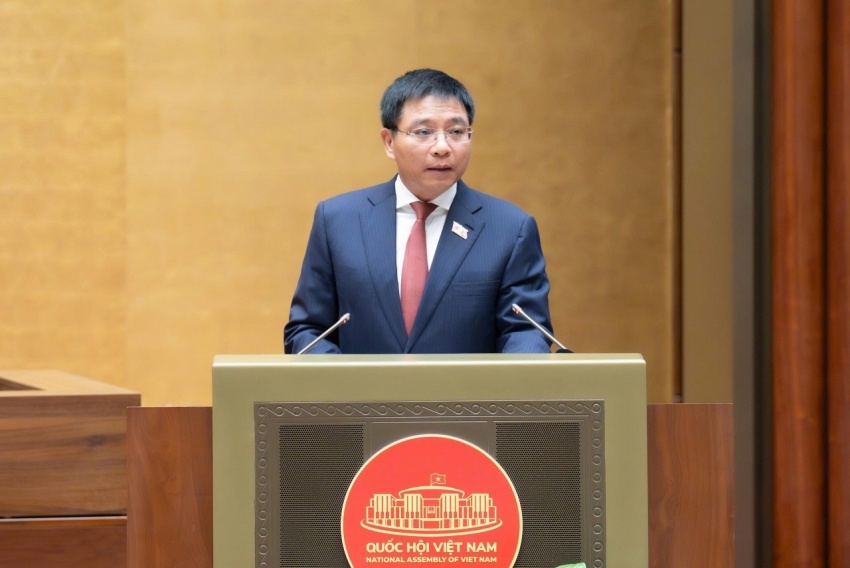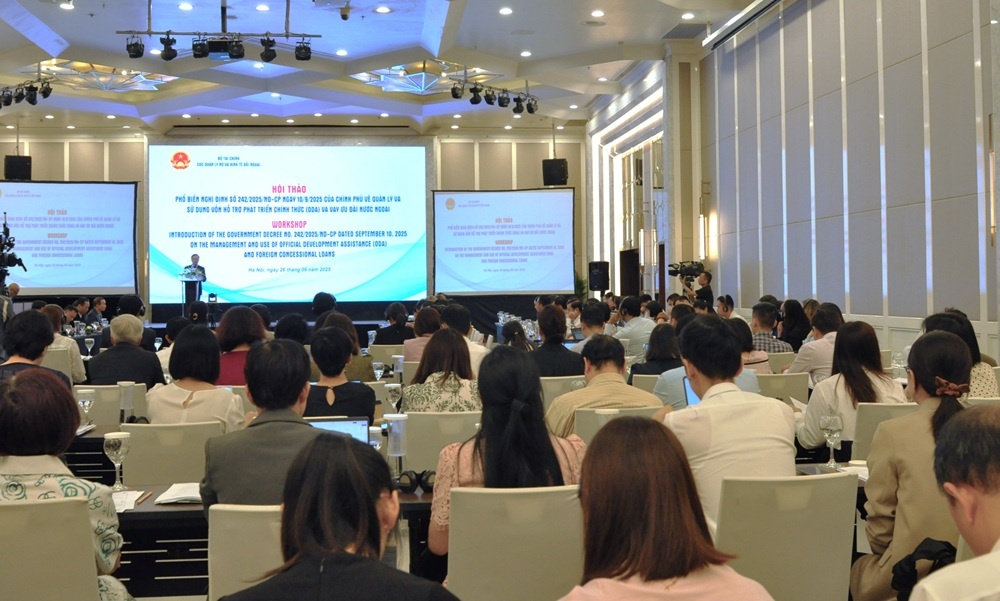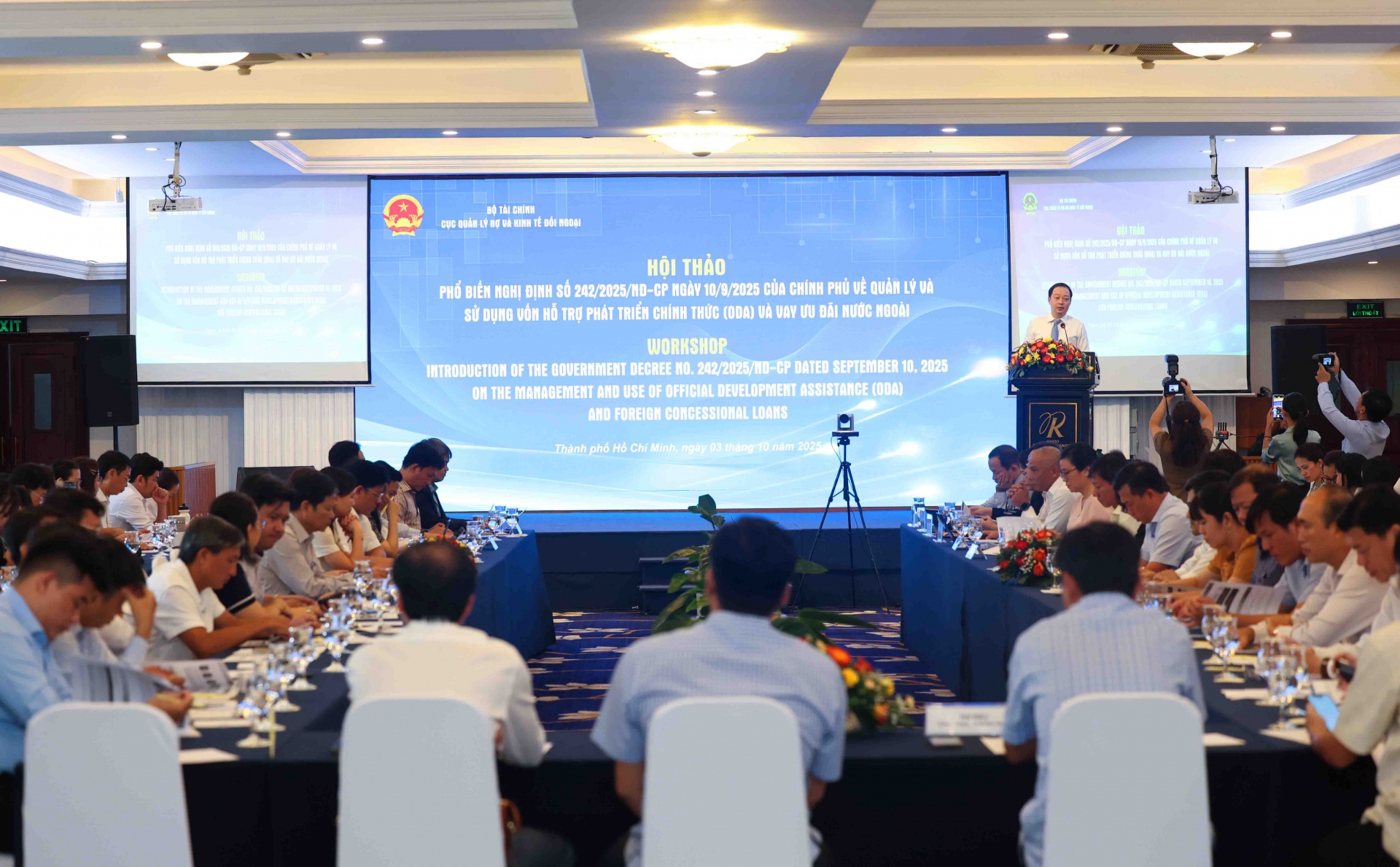 |
| Minister of Finance Nguyen Van Thang |
This information was presented by the Ministry of Finance (MoF) during a group discussion at the National Assembly (NA) on the morning of November 3 about the draft amended Law on Public Debt Management.
Thang stated that many projects financed by ODA loans have had a positive impact on economic growth. However, there remain numerous obstacles in the disbursement of these funds. He raised that one of the main difficulties for projects using ODA funds is the lengthy loan process.
It can take years from initiating discussions with partners, negotiating, preparing documents, to signing the loan agreement. This often results in loan agreements being effective for only half of their intended period before disbursement begins.
“Some projects reach the end of their loan agreements but have not yet fully disbursed funds, requiring extended renewal,” the minister said, "In many cases, donors refused to extend negotiations, leaving projects unfinished and forcing them to seek new funding to continue."
He said that some local authorities and hiring agencies were not thorough or meticulous enough in their preparation and planning. Later, during implementation, projects often encounter additional administrative procedures or efficiency issues.
"The world's largest borrowing nations can take on debt equivalent to 150 per cent or even 200 per cent of GDP because those loans are effective, especially in financial returns. Vietnam's ODA borrowing should follow a similar principle," Thang said.
The minister emphasised that the current amendment to the Law on Public Debt Management aims to consolidate and resolve obstacles, managing all loan capital through a single authority, along with reorganising the central apparatus. Previously, ODA loans had to go through at least two ministries, finance and planning and investment, which caused some delays.
Alongside the legal amendments, the MoF has reported to the government and revised decrees on ODA borrowing to ensure timely disbursement. For standard loans, procedures must be completed within 12 months to sign the loan agreement, while more complex projects may take about 14 months.
The amended law also adds provisions to decentralise and delegate authority to the prime minister and the MoF in deciding and managing the budget. Ministries, provincial people's committees, and state-owned enterprises may now submit loan proposals to the MoF for assessment and then to the prime minister for approval as a basis for investment project implementation.
Project management agencies only need to prepare basic information about the loan (loan amount, donor, purpose) when submitting proposals, instead of complex procedures such as preparing an investment intention report as before. This streamlining could reduce approval time from several years or months to about one month, allowing businesses more autonomy in negotiating loans.
Regarding the method of concessional lending, the draft law stipulates that commercial banks will re-lend to public service units under a mechanism that the lending agency bears no credit risk. Commenting on this provision, NA Chairman Tran Thanh Man warned that lending without credit risk responsibility could lead to lax appraisal procedures, increasing the risk of default, which would ultimately burden the state.
“The greatest concern is that funds may be borrowed for one purpose but used for another, while banks lack clear guidance for inspection and supervision,” Chairman Man said, and requested that the responsibilities of commercial banks in assessing financial plans and handling potential loan defaults be clarified.
In addition to revising regulations on concessional loan management, the draft law also strengthens public debt management measures. According to the government's report, total borrowing demand in 2026 is projected at VND969.8 quadrillion ($37 billion), up 19 per cent compared to the 2025 plan.
By the end of this year, key debt indicators are expected to remain within limits approved by the NA: a public debt-to-GDP ratio at 35-36 per cent, external debt-to-GDP ratio at 31-32 per cent, the government's direct debt service-to-revenue ratio at 19-20 per cent, and external debt service-to-total export revenue ratio at 6-7 per cent.
Chairman Man said that public debt is a matter of public and investor confidence. He said, “People fear high national debt, but in fact, larger countries often have higher debt levels; borrowing is essential for development.”
Vietnam aims to invest in major infrastructure projects in the near future, such as the North-South high-speed railway and urban rail systems in Hanoi and Ho Chi Minh City, making the balancing and mobilisation of capital sources crucial. “The key is to comprehensively review and coordinate central and local borrowing to promote sustainable development,” he concluded.
The NA is expected to discuss the draft amended Law on Public Debt Management in a plenary session on November 18 and vote for it on December 11.
 | New decree to streamline ODA and concessional loan management A new decree simplifies official development assistance (ODA) and concessional loan procedures, strengthens decentralization, and enhances foreign capital use for sustainable economic development. |
 | Ministry of Finance moves to improve management of foreign funding The government is moving to improve the management and use of foreign funding to support national development, the Ministry of Finance said at a workshop in Ho Chi Minh City. |
 | Accelerating disbursement of foreign capital key to driving growth this year The disbursement of public investment capital, including capital from foreign funds, has been identified as a key task for 2025, directly contributing to the government's goal of achieving economic growth of over 8 per cent. |



















































